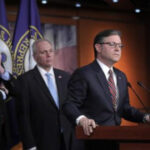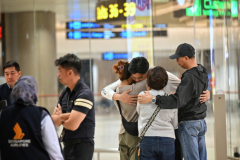NEW YORK — President Donald Trump’s tariffs crusade has taken aim at a number of foreign goods, from European wines and car parts from Mexico to films made abroad. Lately, the president’s wandering ire has found another rhetorical poster child: toy dolls.
Trump asserted that children will be fine having two dolls — perhaps three or five — instead of 30 if U.S. import taxes increase consumer prices. The response on social media included memes of him portrayed as the Grinch and photos of a young Barron Trump’s child-sized Mercedes convertible.
“COMPLETELY out of touch,” The Loyal Subjects CEO Jonathan Cathey, whose collectible toy company in Los Angeles produces Strawberry Shortcake and Rainbow Brite dolls, wrote on Linkedin. “If that ain’t a ‘Let them eat cake’ moment shot through the echoes of history? Love how toys and dolls have become THE martyr metaphor for this nonsensical trade war incoherence.”
The president’s comments also touched a nerve with parents, both ones who took offense at the casual way he hypothesized that perhaps “two dolls will cost a couple bucks more” and those who acknowledged their own kids have more toys than they need.
Either way, the U.S. toy industry has a lot riding on a possible deescalation of the tariff standoff between the Trump administration and the government in Beijing. Nearly 80% of the toys sold in the U.S. come from China.
The Toy Association, a trade group, has lobbied for an immediate reprieve from the 145% tariff rate the president put on Chinese-made products. Some toy companies warn the likelihood of holiday shortages increases each week the tariff remains in effect.
Here’s a snapshot of the doll debate and how tariffs are impacting toys:
From Barbie, Bratz and Cabbage Patch Kids to Adora baby dolls, American Girl and Our Generation, dolls are a big business in the U.S. as well as beloved playthings.
The doll category, which includes accessories like clothes, generated U.S. sales of $2.7 billion last year compared to $2.9 billion in 2023 and $3.4 billion in 2019, according to market research firm Circana.
Consumers splurged on toys during the height of the COVID pandemic to keep children and themselves occupied, but sales flattened as inflation seized the economy.
Younger girls becoming more interested in buying makeup and skincare also has cooled the demand for dolls, Marshal Cohen, Circana’s chief retail advisor, said.
The nation’s largest toy maker, Mattel, said this week it would have to raise prices for some products sold in the U.S. to offset higher costs related to tariffs.
The company, whose brands include Barbie and American Girl, said the increases were necessary even though it’s speeding up the expansion of its manufacturing base outside of China.
Smaller toy companies are expected to have a harder time than Mattel and Hasbro, which makes the eating, drinking and diaper-wetting Baby Alive. Cathey said he paused The Loyal Subjects’ shipments from China in April because he couldn’t pay the stratospheric tariff they would have incurred.
“Nobody insulates themselves with that much cash,” he said.
With about four months’ worth of inventory on hand, Cathey said his ability to secure holiday stock depends on a break in the U.S.-China trade standoff happening in the next two weeks since it would take time for cargo operations to resume.
Cepia, a Missouri company that was behind the 2009 holiday season hit Zhu Zhu Pets, launched a line of 11-inch fashion dolls called Decora Girlz last year. CEO James Russell Hornsby said he was working to relocate some production but the move won’t happen in time to replace the orders he planned to get from China.
Hornsby described himself as a Trump supporter





